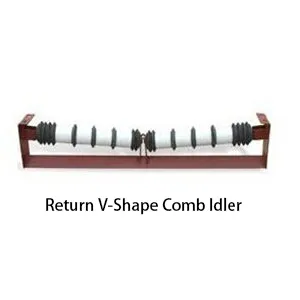 Afrikaans
Afrikaans  Albanian
Albanian  Amharic
Amharic  Arabic
Arabic  Armenian
Armenian  Azerbaijani
Azerbaijani  Basque
Basque  Belarusian
Belarusian  Bengali
Bengali  Bosnian
Bosnian  Bulgarian
Bulgarian  Catalan
Catalan  Cebuano
Cebuano  Corsican
Corsican  Croatian
Croatian  Czech
Czech  Danish
Danish  Dutch
Dutch  English
English  Esperanto
Esperanto  Estonian
Estonian  Finnish
Finnish  French
French  Frisian
Frisian  Galician
Galician  Georgian
Georgian  German
German  Greek
Greek  Gujarati
Gujarati  Haitian Creole
Haitian Creole  hausa
hausa  hawaiian
hawaiian  Hebrew
Hebrew  Hindi
Hindi  Miao
Miao  Hungarian
Hungarian  Icelandic
Icelandic  igbo
igbo  Indonesian
Indonesian  irish
irish  Italian
Italian  Japanese
Japanese  Javanese
Javanese  Kannada
Kannada  kazakh
kazakh  Khmer
Khmer  Rwandese
Rwandese  Korean
Korean  Kurdish
Kurdish  Kyrgyz
Kyrgyz  Lao
Lao  Latin
Latin  Latvian
Latvian  Lithuanian
Lithuanian  Luxembourgish
Luxembourgish  Macedonian
Macedonian  Malgashi
Malgashi  Malay
Malay  Malayalam
Malayalam  Maltese
Maltese  Maori
Maori  Marathi
Marathi  Mongolian
Mongolian  Myanmar
Myanmar  Nepali
Nepali  Norwegian
Norwegian  Norwegian
Norwegian  Occitan
Occitan  Pashto
Pashto  Persian
Persian  Polish
Polish  Portuguese
Portuguese  Punjabi
Punjabi  Romanian
Romanian  Russian
Russian  Samoan
Samoan  Scottish Gaelic
Scottish Gaelic  Serbian
Serbian  Sesotho
Sesotho  Shona
Shona  Sindhi
Sindhi  Sinhala
Sinhala  Slovak
Slovak  Slovenian
Slovenian  Somali
Somali  Spanish
Spanish  Sundanese
Sundanese  Swahili
Swahili  Swedish
Swedish  Tagalog
Tagalog  Tajik
Tajik  Tamil
Tamil  Tatar
Tatar  Telugu
Telugu  Thai
Thai  Turkish
Turkish  Turkmen
Turkmen  Ukrainian
Ukrainian  Urdu
Urdu  Uighur
Uighur  Uzbek
Uzbek  Vietnamese
Vietnamese  Welsh
Welsh  Bantu
Bantu  Yiddish
Yiddish  Yoruba
Yoruba  Zulu
Zulu Understanding the Mechanics of Herringbone Wing Pulleys in Engineering Applications
The Herringbone Wing Pulley A Vital Component in Modern Machinery
In the realm of mechanical engineering and design, the intricacies of each component can significantly influence the efficiency and functionality of entire systems. One such important component is the herringbone wing pulley, an innovative engineering solution that has gained traction across various industries. This article delves into the significance, design, and applications of herringbone wing pulleys, illustrating their critical role in modern machinery.
Understanding the Herringbone Wing Pulley
A herringbone wing pulley is characterized by its unique shape, which resembles the bones of a herring fish, hence its name. This design consists of two sets of angled teeth that create a V-shaped pattern, effectively minimizing slippage and allowing for smoother power transmission. The wings of the pulley protrude outward, offering increased surface area for improved grip on belts and ropes.
The herringbone pattern is particularly advantageous because it provides higher torque capabilities compared to traditional flat or even single V-shaped pulleys. By distributing the load evenly across its surface area, the herringbone design facilitates more efficient energy transfer, which is crucial in applications where high performance and reliability are essential.
Design and Engineering Considerations
The design of a herringbone wing pulley is not merely aesthetic; it encompasses a range of engineering principles aimed at optimizing performance. Key considerations include
1. Material Selection The choice of materials for manufacturing herringbone pulleys is critical, as it impacts durability, weight, and resistance to wear. Common materials include high-strength aluminum alloys and reinforced plastics, which can withstand high loads and provide longevity in performance.
2. Size and Dimensions The dimensions of a herringbone wing pulley must be meticulously calculated to ensure compatibility with other components in a machine system. Factors such as the diameter, thickness of the wings, and spacing between teeth can affect how effectively the pulley operates.
3. Load Distribution One of the primary advantages of the herringbone design is its ability to evenly distribute loads across multiple teeth. This feature enhances the durability of the pulley, reducing stress concentrations that might lead to premature failure.
herringbone wing pulley

4. Manufacturing Processes The production of herringbone wing pulleys often employs advanced manufacturing techniques, such as CNC machining and injection molding, which ensure precision and consistency in each component.
Applications Across Industries
Herringbone wing pulleys are versatile components used across a wide array of industries. Some notable applications include
1. Automotive Industry In automotive engineering, herringbone pulleys are used in timing belts and drive systems that require synchronous power transmission. Their ability to handle high torque makes them suitable for performance vehicles.
2. Industrial Machinery Many types of machinery, from conveyor systems to manufacturing equipment, utilize herringbone wing pulleys to manage the transmission of power and motion efficiently. Their design is particularly beneficial in applications where space is constrained.
3. Aerospace The aerospace industry also sees the implementation of herringbone wing pulleys in various systems, including engine components and control mechanisms. The lightweight attributes of these pulleys contribute to overall fuel efficiency and safety in aircraft design.
4. Marine Applications In nautical settings, these pulleys play essential roles in anchor machinery and propulsion systems, offering reliability and strength in harsh marine environments.
Conclusion
The herringbone wing pulley stands as a testament to the innovative spirit of engineering, merging functionality with efficiency. Its unique design facilitates effective power transmission while reducing wear and slippage, making it an indispensable component in a multitude of applications. As industries continue to evolve and demand higher performance from their machinery, the role of the herringbone wing pulley will likely expand, cementing its place as a vital player in the future of mechanical design and engineering. Embracing such advancements not only enhances productivity but also drives towards a more efficient and sustainable industrial landscape.
-
Revolutionizing Conveyor Reliability with Advanced Rubber Lagging PulleysNewsJul.22,2025
-
Powering Precision and Durability with Expert Manufacturers of Conveyor ComponentsNewsJul.22,2025
-
Optimizing Conveyor Systems with Advanced Conveyor AccessoriesNewsJul.22,2025
-
Maximize Conveyor Efficiency with Quality Conveyor Idler PulleysNewsJul.22,2025
-
Future-Proof Your Conveyor System with High-Performance Polyurethane RollerNewsJul.22,2025
-
Driving Efficiency Forward with Quality Idlers and RollersNewsJul.22,2025





























